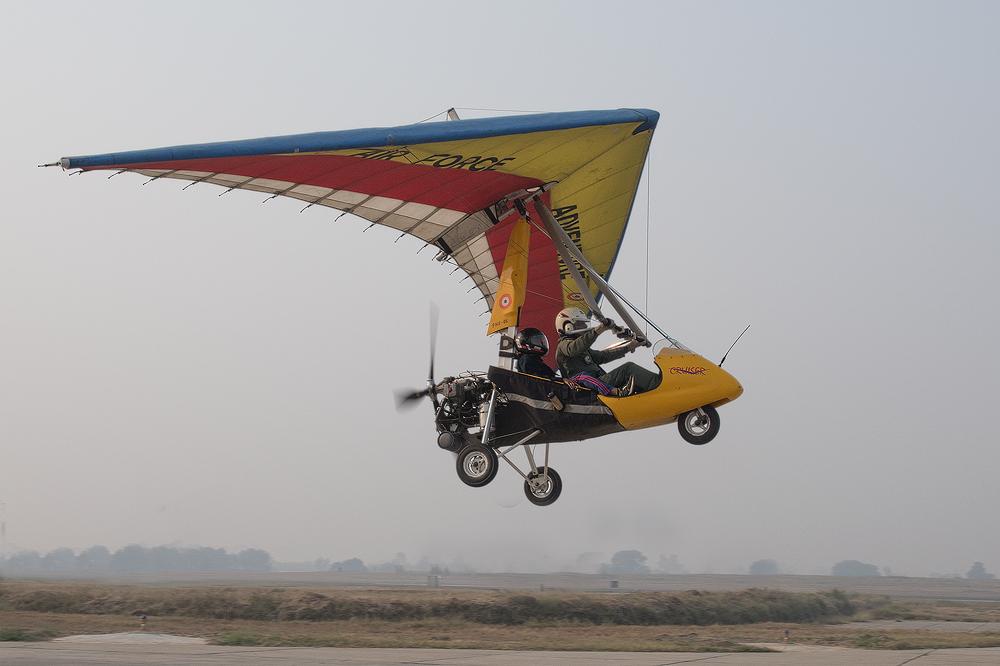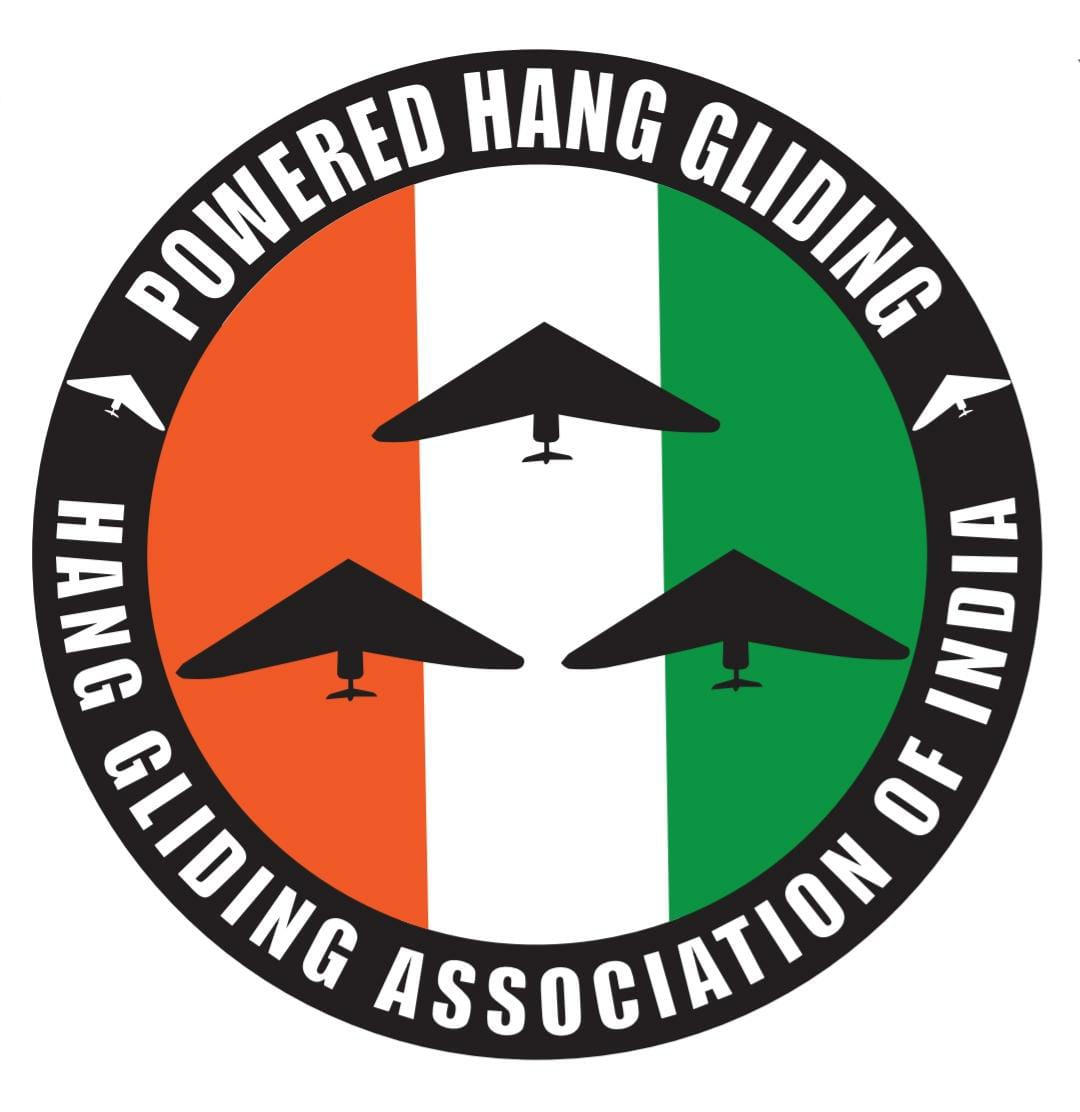
A powered hang glider, also known as a powered hang glider trike or simply a “trike,” is a type of ultralight aircraft that combines a hang glider wing with a motorized tricycle undercarriage. This allows for powered flight and increased control compared to traditional non-powered hang gliders. Here’s a brief overview of a powered hang glider with a focus on the heading control:
Hang Glider Wing: The hang glider wing is the same as that used in traditional hang gliding. It consists of a lightweight frame with a flexible wing surface made of fabric or other materials.
Motorized Tricycle Undercarriage: Unlike traditional hang gliders, powered hang gliders have a motorized tricycle undercarriage attached to the wing. This undercarriage consists of three main components:
The engine: Usually a small, lightweight two-stroke or four-stroke engine mounted on the rear of the trike. This engine provides thrust for propulsion.
The wheels: Two main wheels at the rear of the trike for takeoff and landing, and a smaller front wheel for steering and stability on the ground.
The cockpit: The pilot sits in a seat or harness that’s attached to the frame of the trike. Controls for the engine, throttle, and steering are within easy reach of the pilot.
Propulsion and Control: The pilot can control the power and direction of the powered hang glider using various controls:
Throttle: The throttle controls the engine’s power output, allowing the pilot to increase or decrease thrust.
Steering: The front wheel of the trike can be steered by the pilot to control the direction of the aircraft while on the ground.
Weight Shift: In the air, the pilot can shift their body weight to control the pitch and roll of the hang glider wing, much like in traditional hang gliding. This helps in turning and banking during flight.
Heading Control: To control the heading (the direction the aircraft is pointing) in the air, powered hang gliders rely on weight shift and banking. By shifting their weight and banking the wing, the pilot can change the heading of the aircraft. Some advanced models may also have ailerons or other control surfaces to assist in heading control.
Powered hang gliders are relatively simple to operate, making them accessible to many recreational pilots. They are used for a variety of purposes, including recreational flying, aerial photography, and even some light sport aviation activities. However, as with any aircraft, proper training and safety precautions are essential when operating a powered hang glider to ensure safe and enjoyable flights.
Enquiry Form

A powered hang glider, also known as a powered hang glider trike or simply a “trike,” is a type of ultralight aircraft that combines a hang glider wing with a motorized tricycle undercarriage. This allows for powered flight and increased control compared to traditional non-powered hang gliders. Here’s a brief overview of a powered hang glider with a focus on the heading control:
Hang Glider Wing: The hang glider wing is the same as that used in traditional hang gliding. It consists of a lightweight frame with a flexible wing surface made of fabric or other materials. Pilots typically hang below the wing in a harness.
Motorized Tricycle Undercarriage: Unlike traditional hang gliders, powered hang gliders have a motorized tricycle undercarriage attached to the wing. This undercarriage consists of three main components:
- The engine: Usually a small, lightweight two-stroke or four-stroke engine mounted on the rear of the trike. This engine provides thrust for propulsion.
- The wheels: Two main wheels at the rear of the trike for takeoff and landing, and a smaller front wheel for steering and stability on the ground.
- The cockpit: The pilot sits in a seat or harness that’s attached to the frame of the trike. Controls for the engine, throttle, and steering are within easy reach of the pilot.
Propulsion and Control: The pilot can control the power and direction of the powered hang glider using various controls:
- Throttle: The throttle controls the engine’s power output, allowing the pilot to increase or decrease thrust.
- Steering: The front wheel of the trike can be steered by the pilot to control the direction of the aircraft while on the ground.
- Weight Shift: In the air, the pilot can shift their body weight to control the pitch and roll of the hang glider wing, much like in traditional hang gliding. This helps in turning and banking during flight.
- Heading Control: To control the heading (the direction the aircraft is pointing) in the air, powered hang gliders rely on weight shift and banking. By shifting their weight and banking the wing, the pilot can change the heading of the aircraft. Some advanced models may also have ailerons or other control surfaces to assist in heading control.
Powered hang gliders are relatively simple to operate, making them accessible to many recreational pilots. They are used for a variety of purposes, including recreational flying, aerial photography, and even some light sport aviation activities. However, as with any aircraft, proper training and safety precautions are essential when operating a powered hang glider to ensure safe and enjoyable flights.
Enquiry Form

